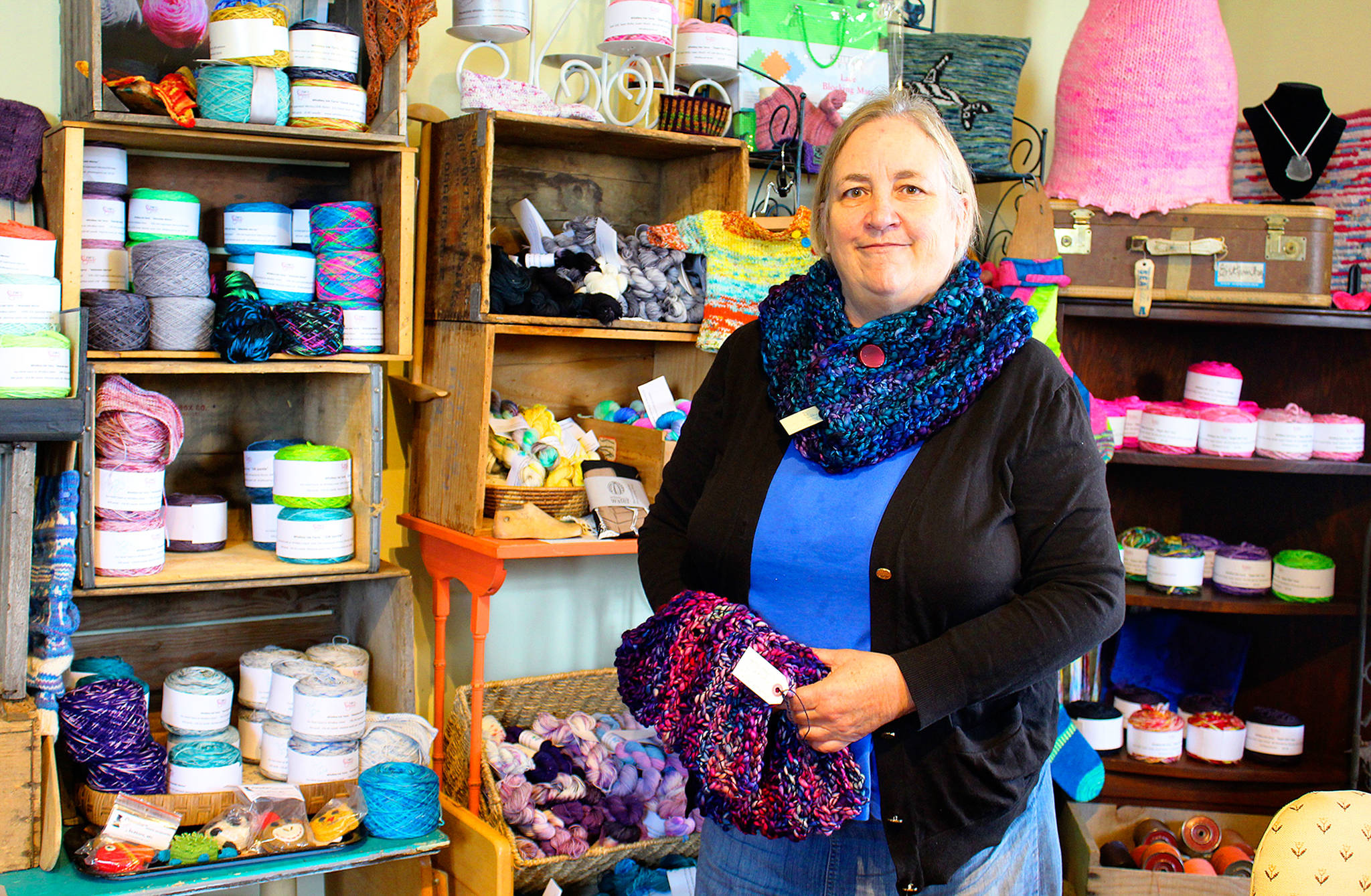It’s a safe bet that some of the 15,000 visitors expected at this weekend’s annual Coupeville Arts &Crafts Show will be leaving with items for their closets.
Wearable art, functional art, fiber art, call it what you will, it’s popular, plentiful and snaring prizes at festivals and art shows regionally and nationally.
A juried art category, fiber creations include felted hats, silken scarves, exquisite capes, bodacious “bun warmers” and soap-and-felt combos that act as mini loofahs.
Fiber art and metal art are particularly trendy, said Carol Moliter, vice president of the Coupeville Festival Association, the non-profit, all-volunteer organization that started the event in 1964 as a way to lure tourists to downtown Coupeville.
“Our vendor committee makes sure there’s a real balance and offering of every arts and style and crafts out there,” she said, adding that many types of fiber art have emerged in the 17 years she’s volunteered with the Coupeville event, often called the longest continuously-running arts festival in the state.
This year, 180 artists will be stationed along downtown streets that will start to be closed for setup Thursday evening. The two-day event kicks off at 7 p.m. Friday at Coupeville Rec Hall with a reception.
The area outside Coupeville Library will serve as a hub for food, music and libations, which is a change from previous years. “Now, you can enjoy a glass of wine, listen to music and grab some food and bring it into the beer and wine garden,” Moliter said. “It’s a much more congenial location for all.”
The craft of turning felt into art is one of the most popular workshops offered at Coupeville’s Pacific Northwest Art School, which sponsors the festival’s juried art show. Coupeville is also the home of The Weavers’ School, taught by renowned artist, Madelyn van der Hoogt.
Linda Lee Nicol and Dena Royal are two local artists who’ve “felt” the growing fascination for fiber art and will be selling at booths this weekend.
“Any art form using animal fibers and other textiles can be considered fiber art,” explained Royal, who opened her Coupeville store, Whidbey Isle Yarns, Gifts and Teas, three years ago.
Royal offers “creative chaos classes” in knitting, crocheting, Amish knot rugs, spinning and embroidery and dry felting. Also called needle felting, this process breaks down fibers with special barbed needles into fluffy wisps that can be matted together to create rainbows of colors and three-dimensional textures.
“Felting was an industrial occupation in the old days,” she said. “Then crafters started doing it. Now quilters are doing it and people are even making paintings with dry felt.”
Wet felting, also called nuno felting, shrinks wool or fleece with water and agitation — think many, many spin cycles in a washing machine.
Felt can be created from wool or other animal fibers, such as alpaca, angora (rabbit), cashmere and mohair (goat), even buffalo. It doesn’t fray, stays warm when wet and doesn’t itch if made from softer, non-lanolin fibers, such as alpaca.
Nicol, owner of the homegrown Greenbank company Whidbey Woolies, found that out the hard way.
Nicol had no idea how wool magically became felt when she just decided a dozen years ago to buy a bunch of needles and “figure it out.”
She’d crocheted blankets for years and needed a new challenge to keep her occupied during slow times as a medical assistant at a doctor’s office.
After much trial and error (and shrunken shreds of fabric) she mastered turning hand-knit, “awkward-looking things” into svelte, smooth and shapely hats that quickly sold out at weekend markets.
“But I knew I couldn’t keep wearing my own hat at my booth because it was too itchy,” Nicol recalled. So she tried yarn made from alpaca fiber.
“It’s so much softer,” she says. “It’s like putting lotion on your hands all the time.”
Nicol travels to about one dozen Northwestern markets and festivals throughout the year selling her hats, matching scarves, head bands and other “woolly” wares.
She’s raised three alpacas and exclusively uses the animal’s softer fiber for her hats.
“There was nobody making hats from alpaca when I first started,” she said. “I made a lot of mistakes in the beginning.” But once she perfected her pattern and process, “then I couldn’t keep up with the demand.”
Royal’s store is a kaleidoscope of color and textures, ranging from an impossibly soft mesmerizing mixture of yak silk and merino wool to big, bold bundles she calls Bumpy Chunky Yarn used to make swirling, loose-fitting neck cowls.
Royal hand dyes almost all the yarns she sells; the skeins can often be seen drying on the wooden railing outside her store along Front Street. Besides selling her own items, Royal represents 10 other Whidbey craft artisans specializing in all things “local, sustainable and hand crafted.”
Fiber art takes on all forms. Weird, wild, wonderful and wondrous.
“What’s that hanging above the fire place,” a customer asked Royal Monday afternoon, pointing to a tiny pink sheaf of tubular yarn made into what looked like a cat’s blanket or a doll’s mini-skirt.
“Oh, that’s a bun warmer. You know, when you wear leggings and it’s cold outside and you need to warm your backside,” Royal replied. “For the younger set, obviously. I wear leggings but I couldn’t wear that. They’re fun to make, though.”


